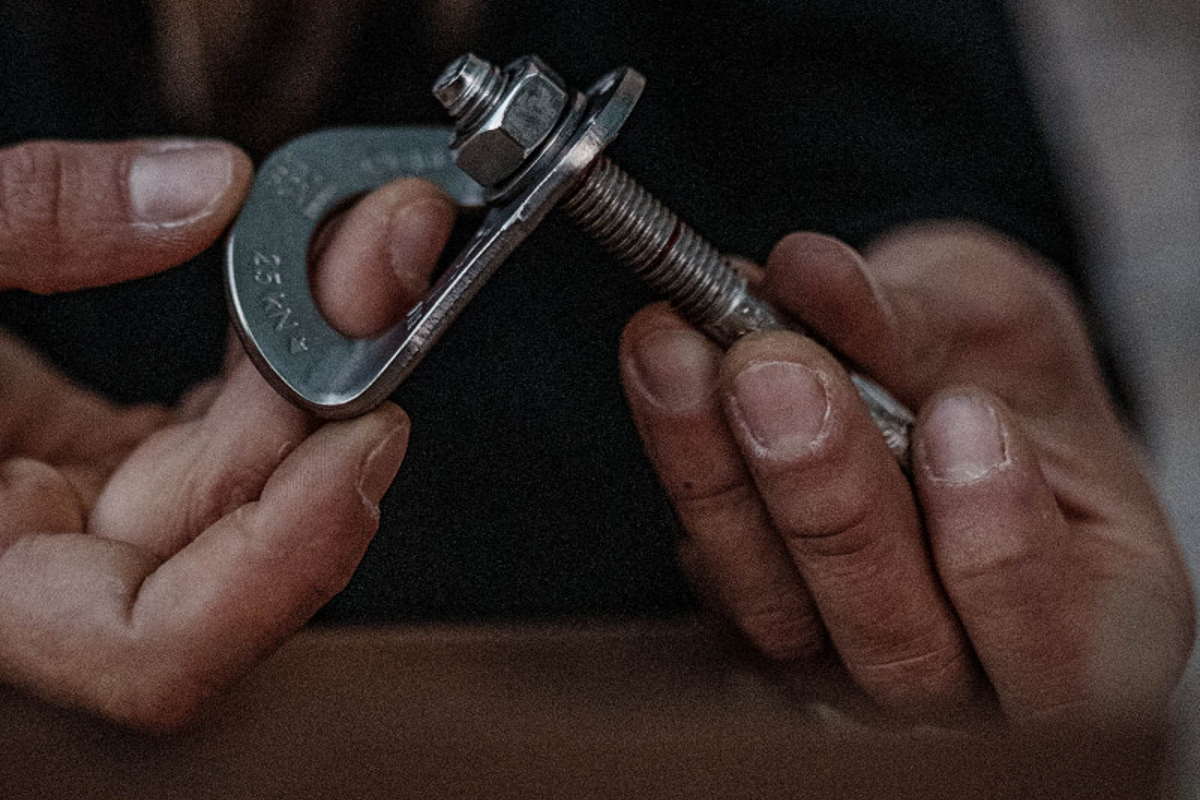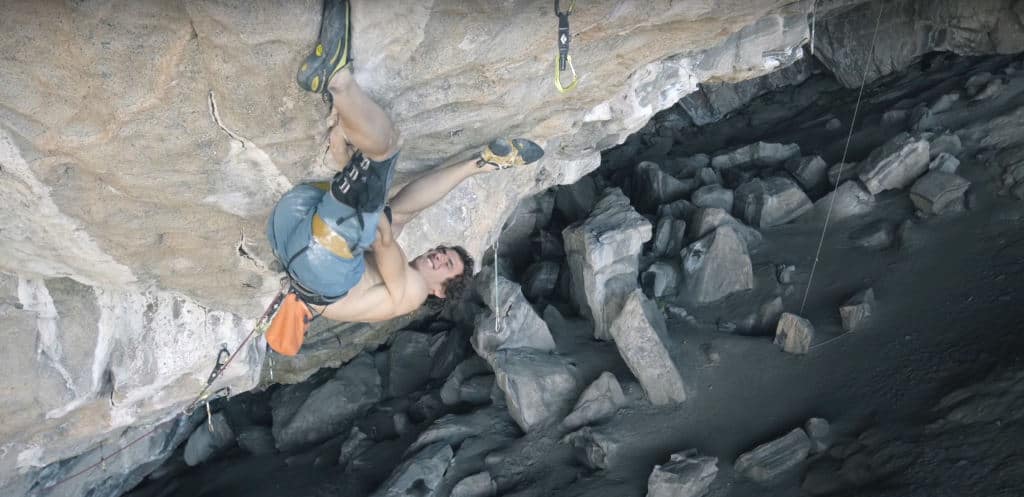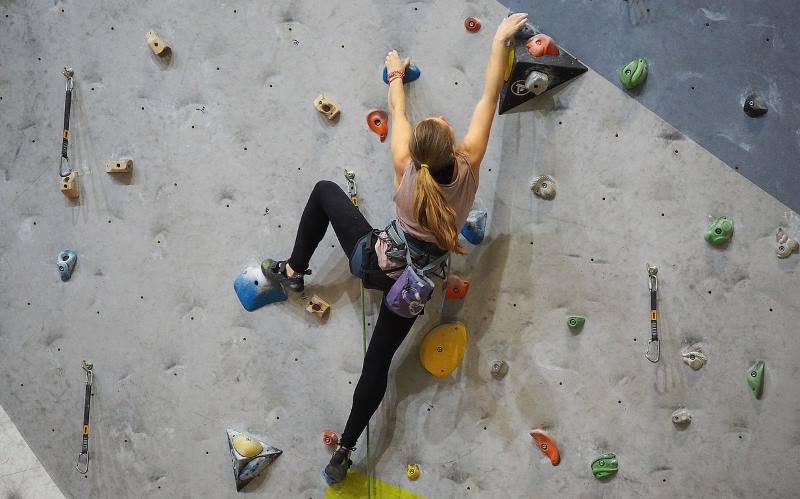Rock Climbing is making headlines for big ascents like the Dawn Wall, ropeless free solo climbers like Alex Honnold, and now for it’s Olympic games debut. But for something so out there – is rock climbing a sport?
In it’s infancy rock climbing was more akin to scrambling and mountaineering. As it’s grown so too have it’s definitions and the people who practice it. In recent years the rock faces have gotten steeper and the gear used much safer.
Climbing was always seen as a daredevil sport and many people who climbed made it their lifestyle. Nowadays people have traded tents for high end camper vans, and remote crags for purpose built climbing gyms. Rock climbing as a sport is now in full bloom.
Is Rock Climbing A Sport?
Rock climbing is a sport that can be done in many ways. Though most climbing is done more as a personal thing – it’s definitely competitive between individuals as well as having huge organized competitions.
Climbing outdoors is hugely popular but it’s really a personal sport about pushing your own limits. Indoor climbing gyms started off as a way of practicing climbing skills but now have become their own thing. Indoors artificial walls are where all competitions now take place.
“Sport climbing” is one of the most popular ways of climbing. It is climbing used fixed protection for safety. The climber wears a harness and is tied in to a rope which is managed by a person below – called the “belayer”.
As the climber goes up they clip their rope to bolts fixed into the wall to protect them in the case of a fall. At the top you can just lower down. If you fall you’ll be caught by the rope which goes through the last bolt you clipped in to.
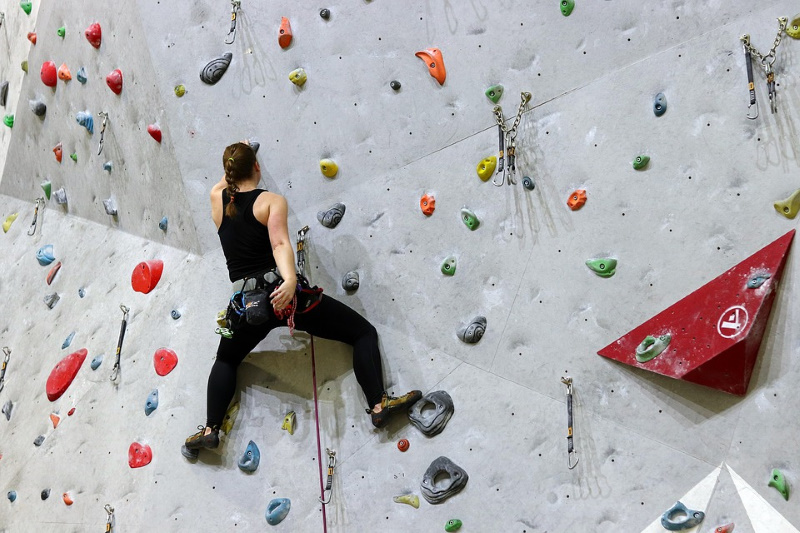
Falling nowadays while sport climbing is way safer than you’d think. If you fall you take just a small fall to just under the last bolt you clipped. The rope stretches to absorb the force better and stop a hard swing into the wall.
A seven to ten foot fall starts off feeling very scary but is actually pretty comfy after a few weeks practice!
Is Rock Climbing A Competitive Sport?
Rock climbing is a competitive sport from local friendly comps to large scale world cups and championships. It started outdoors on real rock in the 80’s with European competitions but all major climbing competitions now take place on artificial walls.
This is because routes can be set by professionals using plastic holds and large wooden “volumes” to add different shapes and obstacles. This means for lead routes that each move can be roughly the same difficulty – getting harder as you go higher.
The biggest organization is the IFSC aka the International Federation of Sport Climbing. They organize worldwide tours that take place in major cities and arenas. Winners gain points along the tour and then compete in finals.
Is Competition Climbing Popular?
Climbing purely to compete is more popular than it has ever been. The first competitions were more of a showcase for outdoors climbers to make a bit of cash and for companies to popularize the gear.
Nowadays kids start climbing at a young age and train specifically to compete. Lead climbing and bouldering especially are practiced more than ever. Speed climbing is more niche but it’s possible to find a speed wall in at least one climbing gym at most US cities.
Japan and Korea especially see climbing as mainly an indoor sport. Competition climbing and performance is put at the forefront and is well funded. In the US and Europe competitions and training from a young age is gaining traction but outdoors climbing is still the main activity.
Is Rock Climbing A Sport In The Olympics?
For the Tokyo 2020 Olympics there will be three different events – Lead Climbing, Bouldering, and Speed Climbing. Most wouldn’t call speed or bouldering strictly “sport” climbing as they’re fairly different.
Climbers must place high in all three categories to win. The format is divisive as most climbers might do well in bouldering and sport, but speed climbers are very specialized. In the 2024 Paris Olympics they’ll each have their own medals.
- Lead Climbing features a 15-20 meter tall wall that climbers each get one chance to climb. The person that gets the highest hold wins.
- Bouldering is low level climbing up to 4.5 meters with thick boudlering crash pads and no ropes. Climbers have a few minutes to top out on as many of the four routes as possible.
- Speed Climbing is head to head climbing on the same route – winner stays on. The 15 meter wall is a standard route that’s been used everywhere for years.
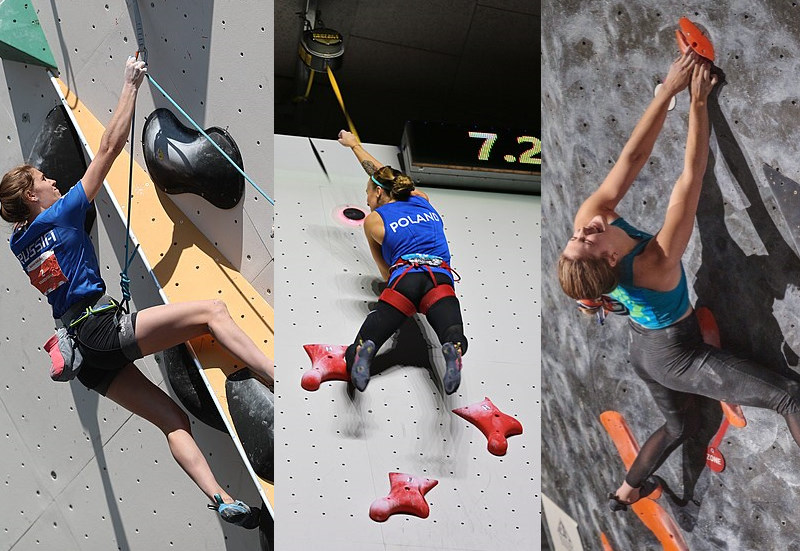
Read our full guide to Olympic Climbing in 2021
Rock Climbing Competition Jargon
- Top Out – Reaching the top of the wall.
- Bolt – A bolt with a hanger to clip a quickdraw into. In competition climbing every bolt must be used.
- Carabiner – A metal oval-ish shape that opens with a small gate to clip a rope in to.
- Quickdraw / Draw – Two carabiners linked by a strong, sewn sling. The rope clips into the bottom carabiner, the other side is secured to the bolt in the wall.
- Anchor / Lower-Off – Chains with carabiners at the top of the route to lower down from
- Beta – The “moves” or information on how to climb a route – What Is Climbing Beta?
- Clipping – Clipping the rope into the quickdraw.
- Dyno – A jumping dynamic movement that often involves taking all four limbs off of the wall!
- Whipper – A big fall. A winger, a lob.
More Climbing Jargon
Is Climbing A Good Spectator Sport?
Absolutely yes! All the different categories in the Olympics are really fun to watch for different reasons. We think Speed Climbing will initially draw people in but lead and bouldering will be the most popular to watch by the end of the Olympics.
The athleticism, dexterity, and thought that goes into the climbs are incredible. Gripping thumb-sized holds upside down and pushing through the strangest body positions can lead to real nail-biting finishes.
With bouldering especially the modern style is very athletic and described as “parkour” bouldering. You’ll see big dynamic moves – dynos – that involve running, jumping, and coordinated movements that require years of practice.
Are There Professional Rock Climbers?
Professional climbers have been around for years. Some stick just to competitions, climbing and training mostly indoors. Many climb mainly outdoors and are sponsored to climb at the highest level.
You might have heard of Alex Honnold from the Free Solo movie, which saw him climbing Yosemite without a rope. You’ve also got famous climbers like Sasha DiGiulian, Adam Ondra, Julia Chanourdie and others.
These climbers normally climb the hardest routes outdoors – whether it’s sport climbing, bouldering, big walls, or expeditions to remote areas. They get sponsored by big gear companies to use and promote their gear, and make films and use social media to promote themselves.
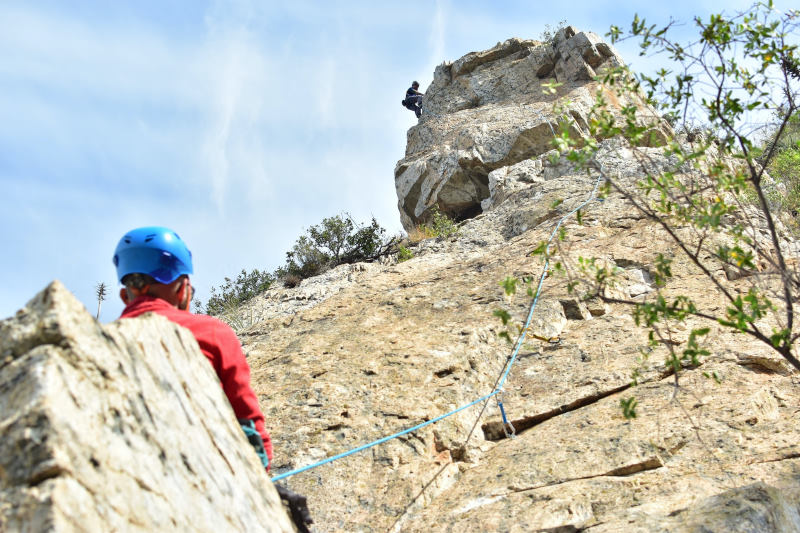
Competitions climbers get sponsored in the same way as other athletes. The same outdoors companies that sponsor skiers, surfers, and other outdoor activity pros also sponsor climbers.
As indoors climbing gets more popular and new climbers buy their first pair of beginner climbing shoes and climbing rope these opportunities are increasing.
Most climbers practice indoors and out and enjoy both. There are handful of elite multi-discipline athletes who are competing indoors at the highest level and sending the hardest routes outdoors too.
Famous Competition Climbers
– Janja Garnbret – Slovenian Olympic Top Pick
– Tomoa Narasaki – Japan’s Olympic Hope
– Reza Alipour Shenazandifard – Current Speed Climbing Record Holder
– Adam Ondra – Best Climber In The World?
Is Climbing An Extreme Sport?
Yes, there are many forms of climbing that are dangerous and would be considered extreme. Free solo climbing is climbing without a rope and about as extreme as it gets.
There are many routes and areas where even with a rope it can be very dangerous. In remote locations with bad weather anything can go wrong. Rock fall is particularly dangerous and can injure climbers and cut ropes.
Red Bull as a major sponsor of many climbers is a a good indication that rock climbing is an extreme sport!
Paraclimbing Competitions
There are many categories of paraclimbing that feature differently able athletes competing. Sadly this wasn’t included in the Tokyo Olympics though it’s hopeful for the Paris 2024 Paralympics.
There are multiple categories that include visually impaired/blind, arm/forearm amputee, leg amputee, and limited range, power and stability. There are also subcategories within those.
The IFSC have also announced another round of Paraclimbing World Cup events to be held in 2021 and beyond. The events are just as awesome to watch
Is Indoor Climbing A Sport?
Indoor rock climbing as a sport is an amazing way to keep healthy, learn a bunch of physical, mental, and technical skills, and make friends. Indoor climbing is more popular than ever with the rise of climbing and bouldering gyms.
If you’ve enjoyed the Olympics coverage or seen some thrilling YouTube vidoes we strongly encourage you to try out climbing. The best thing to do is jump on a taster course at a local climbing gym where they can show you the ropes (sorry not sorry).
Looking to try Rock Climbing as a sport?
– Rock Climbing Benefits
– Rock Climbing For Exercise
– Rock Climbing For Weight Loss
